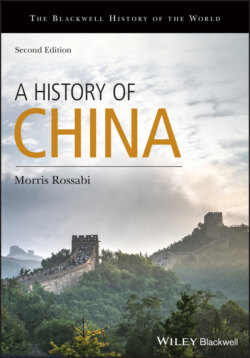Читать книгу A History of China - Morris Rossabi - Страница 30
TRANSFORMATIONS IN THE ECONOMY
ОглавлениеThe economic transformations derived, in part, from the more fluid social system. With the decline of the old aristocracy, new patterns of land ownership evolved. The earlier manorial system in which peasants tilled the land granted by the ruler to the nobility gradually shifted to a system of private ownership. Peasants could now own land previously in the hands of the hereditary aristocratic families who had suffered as a result of the conflicts. The peasants’ lot did not necessarily improve because the various state governments now imposed stiff taxes on them, and many of them eventually had to sell or give up their land to local landlords or usurers. Tenancy increased, and land became increasingly concentrated in estates owned by the new elite. Paradoxically, ownership of land and the relative ease with which it could be purchased and sold did not generally lead to better conditions for the peasantry. Large landholders benefited most from the transition to private ownership of land. Many peasants continued to till the land but now as tenants. A few who were deprived of their land became floating vagabonds, at times cooperating with bandits or potential rebels, which naturally exacerbated the turmoil afflicting China during this era.
The scenario described above characterized many periods in Chinese history. Stiff taxes, heavy corvée demands, encroachments by landlords, and high, burdensome rates of interest charged by moneylenders harmed many peasants, compelling some to sell or entrust their land to landlords, who had managed to achieve a tax-free status. The recurrence of such patterns has given rise to the concept of dynastic cycles – that is, each dynasty went through a regular ebb and flow, with the same factors as in preceding dynasties leading to its rise and eventual collapse. However, though certain patterns seem to be similar, scholars now question the idea of a “dynastic cycle” because there were just as many, if not more, differences contributing to the growth and decline of individual dynasties.
Another paradox was that agronomy and trade actually developed during this period of warfare. Better irrigation systems and new farming techniques led to greater food production. The conflicts prompted the construction and repair of roads, which naturally facilitated trade. The individual states gained control of more territory, with the result that, when peace prevailed, merchants could travel unhindered in a larger expanse. As contacts with other states increased, demands for new or previously unknown products developed, and merchants sought to fill these demands. Bronze money appeared and facilitated commerce. Money in the shapes of knives and spades came into wider circulation, particularly in the cities, which proliferated and now became more populated and more market-oriented. Merchants could aspire to higher social positions because social status was not as fixed as it had been in the Western Zhou dynasty. Using their newly won gains, they could buy land or a government office, easing their way into the elite.
Commerce fostered exchanges of all sorts and led to the introduction of new products and new technologies, not to mention new ideas. Even before the Eastern Zhou, developments in areas to the west influenced China. For example, the chariot probably entered into China from modern Kazakhstan, where it likely originated as early as 2000 BCE. The ox-drawn plow, which was invented in west Asia, appeared during the Eastern Zhou. Central Asia, where many animals had been domesticated, was in touch with China, judging from the introduction of camels and donkeys toward the end of the Zhou. Along with the horse, the arrival of these two beasts of burden marked an important economic advance because they facilitated transport and commerce.
Economic vibrancy also culminated in domestic innovations and inventions. Iron started to be substituted for bronze (but did not entirely supplant it). Agricultural implements such as shovels, plowshares, sickles, hoes, and rakes were the most common tools, and the use of iron plows permitted greater efficiency in farming, enabling peasants to work previously uncultivable land. The use of oxen as draft animals allowed peasants to farm larger plots of land. Hammers, chisels, axes, knives, and other iron tools were also plentiful, as were items of daily usage such as cups, nails, and belt buckles. Unlike bronze, iron was not generally used for the production of ritual and ceremonial vessels. Bronzes continued to be produced in large quantities and with some new features. More elaborate designs, including new motifs of intertwined dragons or snakes, characterized some of the bronzes. The Eastern Zhou rulers also lavished more attention on bronze weapons because of the unstable and strifetorn conditions, and bronze mirrors appeared in larger numbers than in the past, particularly in the state of Chu. Distinctive lacquered objects, including drums, cups, and boxes, have been found in Chu tombs. Musical instruments, utilitarian vessels for food and drink, and mortuary objects, all made of lacquer, have been excavated and were highly valued, as evidenced by their positions in tombs. Gold and silver bowls and jade ornaments revealed a high level of craftsmanship, and their placement in graves indicates the great value accorded to these objects. All of these luxury goods, in addition, attest to the existence of a prosperous elite that could afford them.
